( Bqp.vn ) – Comrade Le Trong Tan (real name Le Trong To), was born on October 1, 1914 in a patriotic peasant family in An Dinh village, Nghia Lo village, Yen Nghia commune, Hoai Duc district, Ha Dong province (now Yen Nghia ward, Ha Dong district, Hanoi city). After more than 40 years of revolutionary activities, regardless of his position, Comrade Le Trong Tan always upheld the spirit of patriotism and revolutionary heroism, did not retreat in the face of any difficulties or challenges, and excellently completed all tasks assigned by the Party, State, People and Army. General Le Trong Tan is truly the pride of the officers and soldiers of the Vietnam People's Army; he has made great contributions to the Vietnamese revolutionary cause in the Ho Chi Minh era.

General Le Trong Tan (Le Trong To).
(1914 – 1986)
A strategic, creative and decisive military leader
Growing up in the flames of the nation's long resistance war, going through many different command positions in the Army, from commanding the attack on Dong Quan fort to seize power in the August Revolution to the historic Ho Chi Minh campaign, the outstanding military talent of General Le Trong Tan is his command to victory in many campaigns; a general on the battlefield, always present in the most thorny and heated battlefields, with the ability to command and change the situation on the battlefield. General Vo Nguyen Giap commented: "General Le Trong Tan is a brave and creative commander, resourceful and decisive, with a very high sense of responsibility and discipline, no matter how difficult and complicated the situation, he always finds ways to overcome difficulties to complete the mission".
During the Viet Bac campaign (1947), the 87th Regiment of Zone 10, commanded by comrade Le Trong Tan, made outstanding achievements on the Lo River, contributing together with the Viet Bac army and people to defeat the large-scale attack and bankrupt the French colonialists' strategy of quick attack and quick victory; preserving and developing the main force, protecting the headquarters and bases of the whole country, bringing the resistance war against the French colonialists to a new period. During the Song Thao campaign (1949), comrade Le Trong Tan was assigned by his superiors as the Campaign Commander. This was one of the first major campaigns of our Army. The campaign ended in victory, we destroyed and forced the withdrawal of 25 strongholds, broke a large part of the Song Thao defense line, creating a continuous position connecting the free zones of the three provinces of Son La, Lao Cai, and Yen Bai. Through the campaign, the main force made great progress in the tactics of destroying strongholds. In the Border Campaign (1950), Regiment 209, with comrade Le Trong Tan as Regiment Commander, was appointed by the Campaign Command as Deputy Commander of the attack to destroy the Dong Khe stronghold, directly commanding the defeat of the Sar-tong Army Corps, contributing to the victory, creating a turning point in the resistance war, contributing to changing the situation of the war... Especially, in the Dien Bien Phu Campaign (1954), with his resolute and creative command, comrade Le Trong Tan, in his position as Commander of the 312th Division, together with the commanding team, mobilized and aroused the willpower of the unit's officers and soldiers, thoroughly grasped and well implemented the change of the combat motto from "Fight fast, solve fast" to "Fight steady, advance steady", organized attacks to destroy the enemy, contributing with our army and people to make the Dien Bien Phu victory "famous in five continents, shaking the earth".

Comrade Le Trong Tan (far left) at the Quang Tri Campaign Command in 1972. (Photo: VNA)
During the resistance war against the US to save the country and the Southwestern border war, General Le Trong Tan's intelligence and strategic talent continued to be affirmed in major campaigns in which he was appointed Campaign Commander. The Route 9 - Southern Laos Campaign (from January 20 to March 23, 1971) was a large-scale counter-attack and annihilation campaign. As Campaign Commander, Comrade Le Trong Tan, together with the collective command of our army and people, fought tenaciously and intelligently, winning a great victory; marking a new development step in the art of Vietnamese campaigns, strongly impacting the battlefield situation, dealing a heavy blow to the US's "Vietnamization of the war" strategy, creating conditions for other battlefields to step up attacks and destroy the enemy.
Taking on the position of Campaign Commander in the Tri Thien Campaign (1972), comrade Le Trong Tan, together with the collective command of our army and people, attacked and destroyed the enemy, liberated Quang Tri province and a number of communes in Thua Thien Hue province, creating a new position and strength for the revolution, contributing to forcing the US imperialists to sign the Paris Agreement on ending the war, restoring peace in Vietnam, and withdrawing troops. In the Hue - Da Nang Campaign (March 1975), Campaign Commander Le Trong Tan commanded the forces to make a resounding victory, contributing to the disintegration of the Saigon army, smashing the enemy's strategic intention of regrouping, creating favorable conditions for our army and people to concentrate forces to carry out the final strategic attack to liberate Saigon and the whole of South Vietnam. In the historic Ho Chi Minh campaign (April 1975), comrade Le Trong Tan was the Deputy Commander of the campaign, directly commanding the Eastern and Southeast wings, including the 2nd and 4th Corps, to liberate Saigon and successfully complete the mission; entering the Independence Palace to capture President Duong Van Minh and the entire Saigon government cabinet, ending the historic Ho Chi Minh campaign with victory.
When the Southwestern Border War (1979) broke out, comrade Le Trong Tan was appointed Commander of the Southwestern Front. With his military talent, he commanded our army and people to closely coordinate with the Cambodian army and people to overthrow the genocidal regime and win great victories, completely liberating the capital Phnom Penh (January 7, 1979), helping Cambodia revive and rebuild the country.
The military strategist was visionary but also very concrete.
General Le Trong Tan - A far-sighted military strategist is shown first of all in the staff and combat work he undertook. From 1961 to 1978, he was Deputy Chief of the General Staff of the Vietnam People's Army and Commander of many fronts; from 1978 to 1986, he was Chief of the General Staff of the Vietnam People's Army and Deputy Minister of National Defense. General Le Trong Tan made an important contribution to helping the Politburo, the Party Central Committee and the Central Military Commission plan military plans in the resistance war and build the country. Just counting the two major campaigns that had decisive significance for victory in the history of the Vietnamese people's resistance against foreign invaders in the 20th century (Dien Bien Phu and Ho Chi Minh), both bore the mark of the talented strategic advisor Le Trong Tan.
In the summer of 1953, under the direct command of the Ministry of National Defense, the Commander of the 312th Division, Le Trong Tan, and the Deputy Commander of the 308th Division, Cao Van Khanh - the talented commanders of the first two main divisions of our Army, were assigned to be in charge of the research team on the topic "Attack and destroy the stronghold group". Based on the research of the successful and failed experiences of our troops when attacking the Na San stronghold group, based on the enemy's arrangement in Hoa Binh town in the Hoa Binh Campaign, along with referring to the experience of the Chinese People's Liberation Army and the Soviet Red Army, the research team compiled documents on attacking the stronghold group. The topic "Attack and destroy the stronghold group" was discussed by the Ministry of National Defense as a premise for the combat plan in the Dien Bien Phu campaign. That was the great contribution of the two strategic advisors to the Dien Bien Phu victory, forcing the French colonialists to sign the Geneva Agreement on ending the war and restoring peace in Indochina.
Since early 1973, after signing the Paris Agreement on Vietnam, under the direction of General Vo Nguyen Giap, the General Staff established a Central Group to study the military plan to liberate the South, headed by Comrade Le Trong Tan, Deputy Chief of the General Staff. Many strategic issues were raised and discussed at the Group, creating a premise for the Ministry of National Defense to draft the "Strategic Plan to Liberate the South". In July 1974, in Do Son (Hai Phong), Comrade Le Trong Tan reported to General Secretary Le Duan about the "Strategic Plan to Liberate the South". At the Politburo meeting from September 30 to October 8, 1974, General Le Trong Tan reported on the two-year strategic plan and the 1975 plan alone with the determination to complete the liberation of the South in the two years 1975 - 1976. After two days of discussion, the Politburo agreed with the conclusion of comrade Le Duan: Our determination is to mobilize the efforts of the entire Party, the entire army, and the entire people in both regions, launch a final general offensive and uprising, develop the revolutionary war to the highest level, destroy and disintegrate all puppet troops, capture Saigon - the enemy's central lair as well as all other cities, overthrow the puppet central and all levels, completely liberate the South, and unify the Fatherland.
In 1975, after the Phuoc Long victory, the Politburo had the basis to affirm the strategic determination to completely liberate the South in 1975. The Military Science Council of the Ministry of National Defense was established with General Vo Nguyen Giap, Secretary of the Military Commission, Minister of National Defense as Chairman; General Van Tien Dung, Chief of the General Staff as First Vice Chairman; two Deputy Chiefs of the General Staff, Senior Lieutenant General Hoang Van Thai and Comrade Le Trong Tan as Permanent Vice Chairmen. The Council's task was to research and gradually plan to review each topic of the General Offensive and Liberation Plan of the South that had been drafted by the General Staff, to discuss major issues on the campaign, experiences on offensives and uprisings, as well as issues on military theory and military art that had been summarized.
Immediately after the Politburo Conference on the Plan to completely liberate the South, on January 9, 1975, the Central Military Commission Standing Committee met, focusing on the Central Highlands campaign. On March 4, 1975, the Central Highlands campaign began, but as early as February, comrade Le Trong Tan proposed and was approved by the Central Military Commission to study the operational plan for the next steps of the Central Highlands campaign, which were the Hue - Da Nang and Saigon campaigns. When the Commander-in-Chief decided to launch the Hue - Da Nang campaign, he was appointed as the Campaign Commander and he successfully completed the assigned task. After the Hue - Da Nang victory, comrade Le Trong Tan was also the one who proposed the establishment of an Eastern wing along Highway 1 to advance into Saigon. Practice proved that the proposal was accurate and had strategic vision. It was a very effective direction of attack in the campaign named after Uncle Ho. With the consent of comrade Le Duan and General Vo Nguyen Giap, the Eastern army was established and commanded by him, quickly advancing into the last lair of the Saigon government. In the conference summarizing the General Offensive and Uprising of Spring 1975, General Vo Nguyen Giap praised: "The Eastern army was a creation of the General Staff because it was not included in the plan to liberate the South from the beginning."
From profound experiences in the battlefield and in response to new mission requirements, comrade Le Trong Tan wrote many valuable military works and theses, along with dozens of articles published in newspapers and magazines at home and abroad. The works that comrade Le Trong Tan left behind are truly scientific works, summarizing the richness of practice and theory to advise the Party, State and Army on strategic issues of military and defense, but also very specific. The main content focuses on the following issues: Building and implementing directions, strategies, planning, plans, tasks, regulations and rules of the State and Army in the military and defense fields and directing the implementation; planning military and defense mechanisms and policies at the army level and solutions, regulations and legal environment for military activities; build to approve and promulgate a system of legal documents on the military and defense fields, focusing on establishing a management and operation mechanism, defining the responsibilities of all levels, sectors, localities and units; building organizations and people, especially school work, military training, building a team of military officers and staff of the armed forces.
In particular, comrade Le Trong Tan attached great importance to and paid attention to building the Vietnamese military art and developing military art, especially the art of offensive, counter-attack and defensive campaigns; on directing operations; on building districts into fortresses and promoting the role of militia and self-defense forces; on improving the combat efficiency of the main force and the command organization level of command cadres and command agencies of the army corps; on the method of combined arms combat in the war of national liberation; on combat training in the new conditions of building and defending the Socialist Republic of Vietnam... From the issues raised in combat practice and all of them were successfully resolved in vivid practice in a creative way according to the Party's guidelines and viewpoints, he drew valuable lessons in training and building the Army to become more standardized and modern. Those are also the important contributions of comrade Le Trong Tan in the research and study of cadres at all levels as well as in the construction and promotion of the unique characteristics of Vietnam's military art today and in the future.
A virtuous commander who loves his troops with all his heart.
General Le Trong Tan was loved by officers and soldiers throughout the army not only for his talent in commanding troops but also for his virtue. As a military officer, he was a shining example of morality, living with affection, loyalty, and loving his soldiers very much. General Le Trong Tan understood that the strength of the revolutionary army, more than any weapon, was the human factor. The love between officers and soldiers, both in normal times and in combat, determined the army's fighting strength. As the direct commander of many battles, General Le Trong Tan was always heartbroken every time he went to battle and saw officers and soldiers under his command sacrificed and never returned. Victory in each battle inevitably involved sacrifice and bloodshed, but he never accepted the saying: "In this battle, we suffered insignificant losses." For General Le Trong Tan, the blood and bones of each officer and soldier were priceless and he was always careful to find a way to fight with the least losses. Therefore, in every battle, whether small or big, he always thinks, learns from experience; always strictly reviews, is honest and straightforward so that the following battles will be victorious with less bloodshed among soldiers.
In his activities, comrade Le Trong Tan always demonstrated a democratic lifestyle, respected the masses; was close, intimate, and listened to the opinions of cadres and soldiers. What he cared about most was taking care to maintain solidarity and unity within the organization, first of all, solidarity within the Party Committee and unit leaders. Before major tasks and especially when facing difficult, difficult, and complicated situations, he organized open meetings to solicit opinions and contributions from cadres and related departments. In such meetings, he often spoke little and was very respectful, listened, and briefly recorded everyone's opinions. With different opinions, he recorded them meticulously, never interrupted, but also suggested that subordinates present their full opinions and finally he concluded. His conclusions are very concise, easy to understand and usually satisfactory, accurate and decisive, making subordinates confident and have a solid foundation in organizing and implementing.
A noble quality of General Le Trong Tan is his integrity and straightforwardness. When he himself has shortcomings, he is ready to admit them in a frank, open, and receptive spirit. On the contrary, with the mistakes and shortcomings of his subordinates, he is always strict but not prejudiced, always forgiving and continues to assign work and help them progress. In particular, he regularly takes care of training and pays attention to the progress of his cadres, and gives them thoughtful advice in their work. He often encourages and encourages brave commanders who dare to fight and take responsibility; at the same time, he always requires that the Party's military cadres, especially those in strategic agencies, must first of all be infinitely loyal to the Party, the Fatherland and the People, have a firm ideological stance, and have clear and honest political views, and must not rely on others or speak only to please their superiors. Comrade Le Trong Tan is truly a commander who is respected and loved by his cadres and soldiers.
Due to his merits and outstanding contributions in the cause of national liberation and defense, General Le Trong Tan was awarded and posthumously awarded many noble prizes by the Party and State: Gold Star Order (posthumously awarded in 2007), 02 Ho Chi Minh Orders, 01 First Class Military Exploit Order, 01 Third Class Military Exploit Order, 01 First Class Victory Order, 01 First Class Resistance Order, 40-year Party membership badge. He was also awarded many other noble medals by the armies of several fraternal countries.
During more than forty years of continuous revolutionary activities, regardless of his position, General Le Trong Tan was always loyal to the revolutionary ideals, to the Party, and to the People. He was one of the staunch communist soldiers; a strategic, creative, and decisive military strategist, an excellent implementer of the military strategic ideas of the Party and Uncle Ho; a military strategist with a far-sighted but also very concrete vision and a virtuous commander who loved his troops with all his heart. The life and career of General Le Trong Tan were closely linked to the process of building, fighting, and growing up of the Vietnam People's Army, from a guerrilla army to a regular army with many branches and services.
The 110th anniversary of General Le Trong Tan's birth takes place at a time when the entire Party, people and army are promoting activities towards the 80th anniversary of the founding of the Vietnam People's Army and the 35th anniversary of the National Defense Day. This is an activity of important political significance to affirm and honor the contributions of comrade Le Trong Tan to the Party, the nation and our Army; it is an activity of practical significance, contributing to educating communist ideals, patriotic and revolutionary traditions for cadres and soldiers, especially today's young generation, to strive to study, practice and constantly cultivate revolutionary ethics, pride, faith in the Party, and determination to excellently complete all assigned tasks.


![[Photo] Opening of the World Cultural Festival in Hanoi](https://vphoto.vietnam.vn/thumb/1200x675/vietnam/resource/IMAGE/2025/10/10/1760113426728_ndo_br_lehoi-khaimac-jpg.webp)



![[Photo] General Secretary attends the parade to celebrate the 80th anniversary of the founding of the Korean Workers' Party](https://vphoto.vietnam.vn/thumb/1200x675/vietnam/resource/IMAGE/2025/10/11/1760150039564_vna-potal-tong-bi-thu-du-le-duyet-binh-ky-niem-80-nam-thanh-lap-dang-lao-dong-trieu-tien-8331994-jpg.webp)
![[Photo] Discover unique experiences at the first World Cultural Festival](https://vphoto.vietnam.vn/thumb/1200x675/vietnam/resource/IMAGE/2025/10/11/1760198064937_le-hoi-van-hoa-4199-3623-jpg.webp)
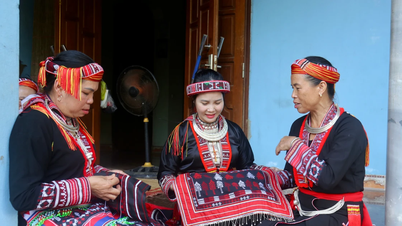




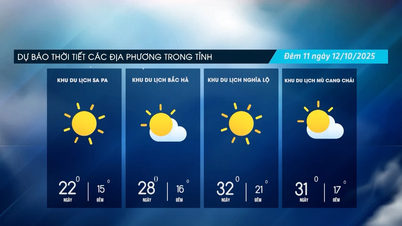
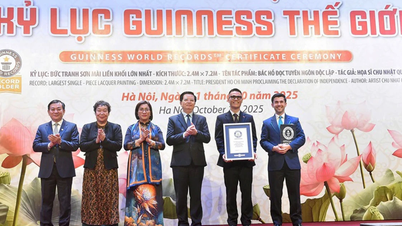





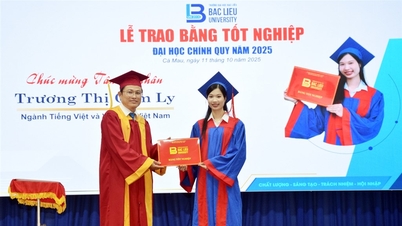

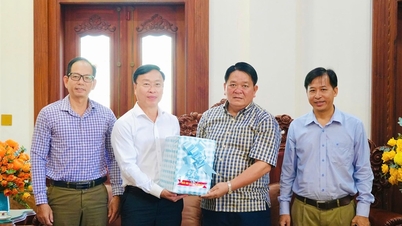
![[Photo] Ho Chi Minh City is brilliant with flags and flowers on the eve of the 1st Party Congress, term 2025-2030](https://vphoto.vietnam.vn/thumb/1200x675/vietnam/resource/IMAGE/2025/10/10/1760102923219_ndo_br_thiet-ke-chua-co-ten-43-png.webp)






































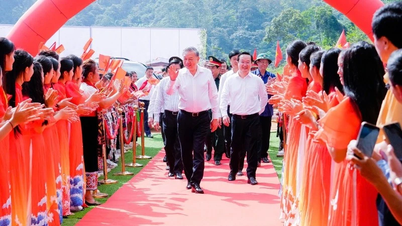

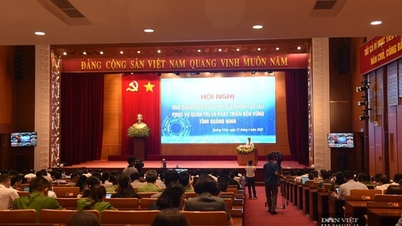



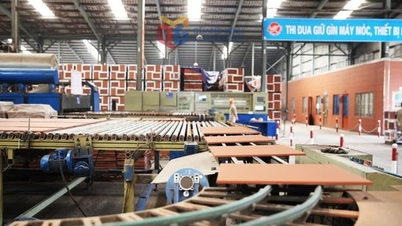



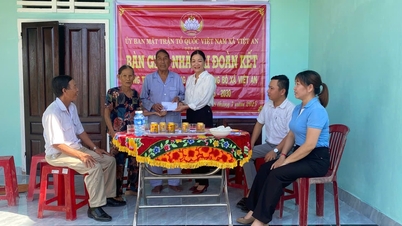



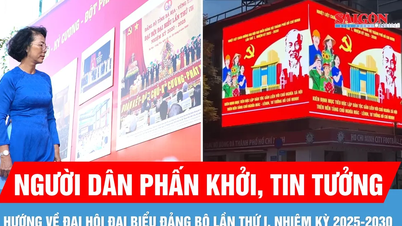

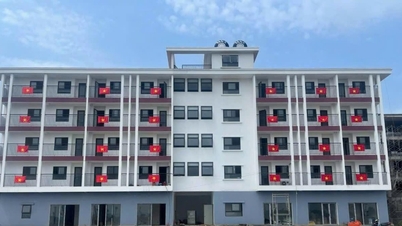

















Comment (0)